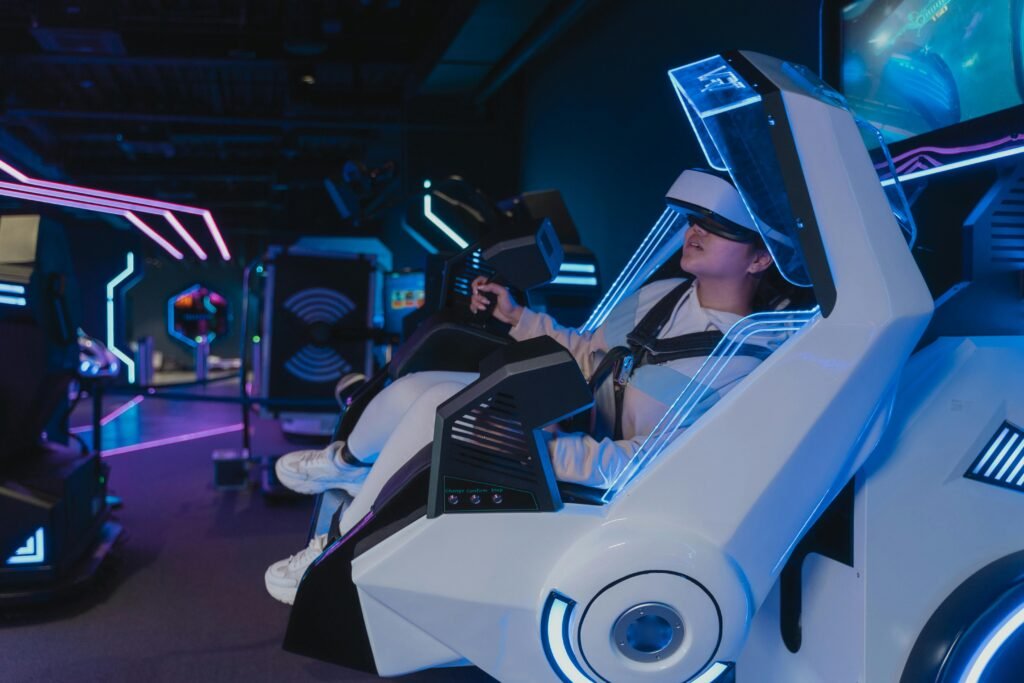🎮 7 Brilliant Ways AI in Game Design Is Transforming the Future of Gaming
In 2025, AI in game design is no longer just a behind-the-scenes tool—it’s the architect of smarter worlds, lifelike characters, and player-specific experiences.
Whether you’re a developer, gamer, or curious technologist, understanding how AI is shaping gaming can change how you play and design forever.
At AiBlogQuest.com, we break down 7 brilliant ways AI in game design is pushing boundaries and reinventing the way we experience digital worlds.
🧠 1. AI Powers Smarter NPC Behavior
Non-playable characters (NPCs) are getting an upgrade.
With reinforcement learning and natural language processing, AI in game design now allows NPCs to:
-
Learn from player behavior
-
React dynamically
-
Hold real conversations
🎮 Example: In The Elder Scrolls VI, AI-driven NPCs may evolve based on how you treat them over time.
🌍 2. Procedural World-Building Through AI
AI can generate massive, complex environments on the fly.
📌 Tech like: Procedural content generation allows games like No Man’s Sky to build billions of unique planets without manual design.
🧭 Impact: Infinite replay value, lower dev time, and immersive exploration.
📖 3. AI-Driven Storytelling and Plot Generation
Game narratives are becoming more dynamic and personalized.
Using AI, developers can:
-
Auto-generate quests
-
Adapt storylines to player decisions
-
Create unique character arcs
🧙 Tools used: Charisma.ai, Inklewriter, and ChatGPT APIs.
🧩 4. AI Personalizes Gameplay for Every Player
AI in game design helps adapt difficulty, level design, or enemy behavior in real time based on the player’s skill level.
💡 Result: A smoother learning curve and tailored gaming experiences.
🕹️ Popular use: AI Director in Left 4 Dead dynamically adjusts zombie intensity based on your performance.
🖼️ 5. AI-Enhanced Visuals and Animation
AI is now used to:
-
Upscale textures
-
Animate facial expressions
-
Sync lip movements to voiceovers
🎨 Example: NVIDIA DLSS uses AI to enhance graphics without performance drop.
🎵 6. Procedural Audio and Adaptive Music
AI tools like Jukedeck and Melodrive generate real-time soundtracks that adapt to gameplay mood, scene, or action.
🎧 Why it matters: Audio isn’t just background—it reacts to your emotional and gameplay states.
🧪 7. Game Testing and QA Using AI
AI bots can simulate thousands of playthroughs to detect bugs, test balance, and optimize performance faster than human testers.
📉 Benefit: Faster release cycles + fewer bugs at launch.
🔗 Useful Links from AiBlogQuest.com
❓ FAQ: AI in Game Design
Q1. What is AI in game design?
It refers to the use of artificial intelligence to create, enhance, or automate various aspects of game development including NPCs, environments, and storylines.
Q2. How is AI changing NPC behavior?
AI allows NPCs to learn and adapt to player choices, making them feel more realistic and less predictable.
Q3. Can AI fully design a game on its own?
While AI can assist in many areas, human creativity is still essential for world-building, emotion, and cohesive storytelling.
Q4. What are the best AI tools in game development?
Popular tools include Unity ML-Agents, Promethean AI, ChatGPT, and NVIDIA DLSS.
Q5. Is AI making games better or less human?
AI enhances mechanics and immersion, but the human touch is still vital for artistic direction and emotion.
🏁 Final Thoughts
AI in game design is more than just a trend—it’s a paradigm shift. As machine learning evolves, so does our ability to craft intelligent, emotional, and infinite worlds.
Want to stay ahead of the game? Subscribe to AiBlogQuest.com for weekly insights into how AI is reshaping the digital universe.
🏷️ Tags:
AI in game design, AI-powered games, AI game development, procedural generation, NPC AI, aiblogquest, bit2050



